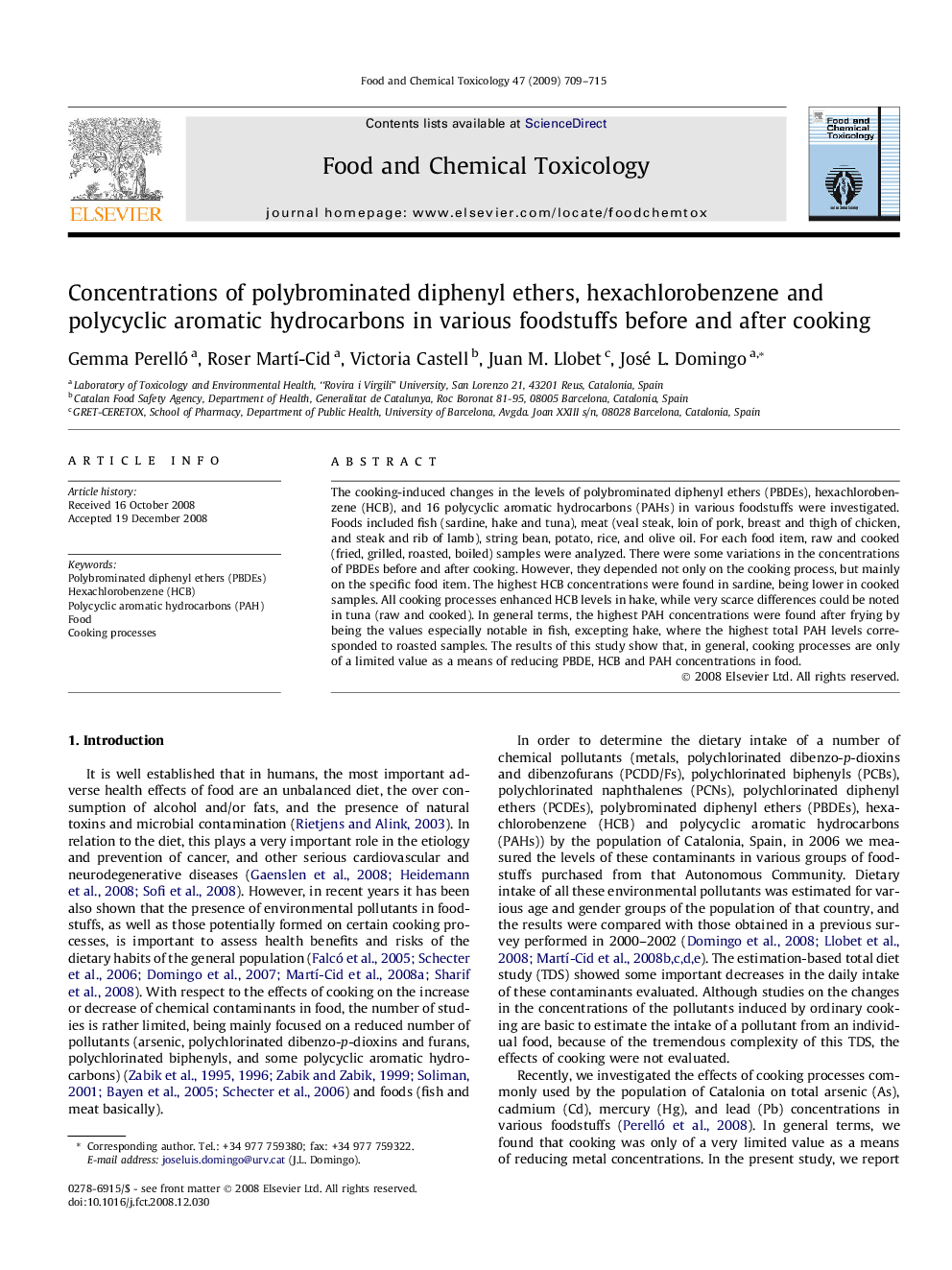| Article ID | Journal | Published Year | Pages | File Type |
|---|---|---|---|---|
| 2586144 | Food and Chemical Toxicology | 2009 | 7 Pages |
The cooking-induced changes in the levels of polybrominated diphenyl ethers (PBDEs), hexachlorobenzene (HCB), and 16 polycyclic aromatic hydrocarbons (PAHs) in various foodstuffs were investigated. Foods included fish (sardine, hake and tuna), meat (veal steak, loin of pork, breast and thigh of chicken, and steak and rib of lamb), string bean, potato, rice, and olive oil. For each food item, raw and cooked (fried, grilled, roasted, boiled) samples were analyzed. There were some variations in the concentrations of PBDEs before and after cooking. However, they depended not only on the cooking process, but mainly on the specific food item. The highest HCB concentrations were found in sardine, being lower in cooked samples. All cooking processes enhanced HCB levels in hake, while very scarce differences could be noted in tuna (raw and cooked). In general terms, the highest PAH concentrations were found after frying by being the values especially notable in fish, excepting hake, where the highest total PAH levels corresponded to roasted samples. The results of this study show that, in general, cooking processes are only of a limited value as a means of reducing PBDE, HCB and PAH concentrations in food.
